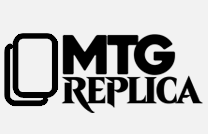The Magic: The Gathering community is built on trust, excitement, and the shared love of a complex, ever-evolving card game. However, as the value of certain cards has soared, so has the unfortunate presence of mtg counterfeit cards in the market. Counterfeits can harm collectors, casual players, and competitive enthusiasts alike, making it crucial for everyone to know how to spot and avoid them.
What Are MTG Counterfeit Cards?
MTG counterfeit cards are unauthorized reproductions created with the intent to deceive. Unlike proxies, which are openly used for casual play or testing, counterfeits are made to look identical to real Magic cards and are often sold as genuine. This deception can lead to financial loss, damaged reputations, and even legal consequences for those who knowingly distribute or sell them.
The Risks of Counterfeit Cards
The dangers of counterfeits go beyond just losing money. When a fake card enters your collection or playgroup, it undermines trust and can create disputes. For tournament players, unknowingly using a counterfeit card can result in disqualification or penalties. For collectors, the presence of counterfeits can devalue authentic collections and make trading riskier.
How to Identify MTG Counterfeit Cards
Spotting a mtg counterfeit card isn’t always easy, especially as counterfeiters have become more sophisticated. Here are some tips to help you identify fakes:
- Check the Card Stock: Authentic Magic cards have a unique layered construction. The “light test” (shining a strong light through the card) can reveal the blue core found in real cards.
- Examine the Print Quality: Look closely at the text, colors, and borders. Counterfeits often have blurry text, off-color printing, or inconsistent borders.
- Feel the Card: Genuine Magic cards have a specific texture and weight. Counterfeits may feel too glossy, too thick, or too light.
- Use a Loupe: A jeweler’s loupe can help you see the rosette pattern (tiny dots) used in Magic’s printing process. Counterfeits may lack this detail.
- Compare with a Known Real Card: If you’re unsure, compare the suspect card to a confirmed authentic card of the same set and rarity.
Protecting Yourself from Counterfeits
- Buy from Trusted Sources: Always purchase singles from reputable dealers, stores, or well-known online platforms.
- Ask for Authentication: Many stores and vendors offer authentication services or can provide proof of authenticity.
- Educate Yourself: Stay informed about common counterfeit techniques and new developments in the market.
- Report Counterfeits: If you encounter a mtg counterfeit card, report it to Wizards of the Coast or your local game store to help protect the community.
The Role of Proxies Versus Counterfeits
It’s important to distinguish between proxies and counterfeits. Proxies are used openly for playtesting or casual games and are not intended to deceive. Counterfeits, on the other hand, are made to be passed off as real cards. Using proxies responsibly is accepted in many playgroups, but counterfeiting is always unethical and illegal.
Conclusion
The presence of mtg counterfeit cards is an unfortunate reality in the Magic community, but with vigilance and knowledge, you can protect yourself and others. Always verify your cards, buy from trusted sources, and educate your playgroup about the risks. By staying alert and informed, you help maintain the integrity and enjoyment of Magic: The Gathering for everyone.
